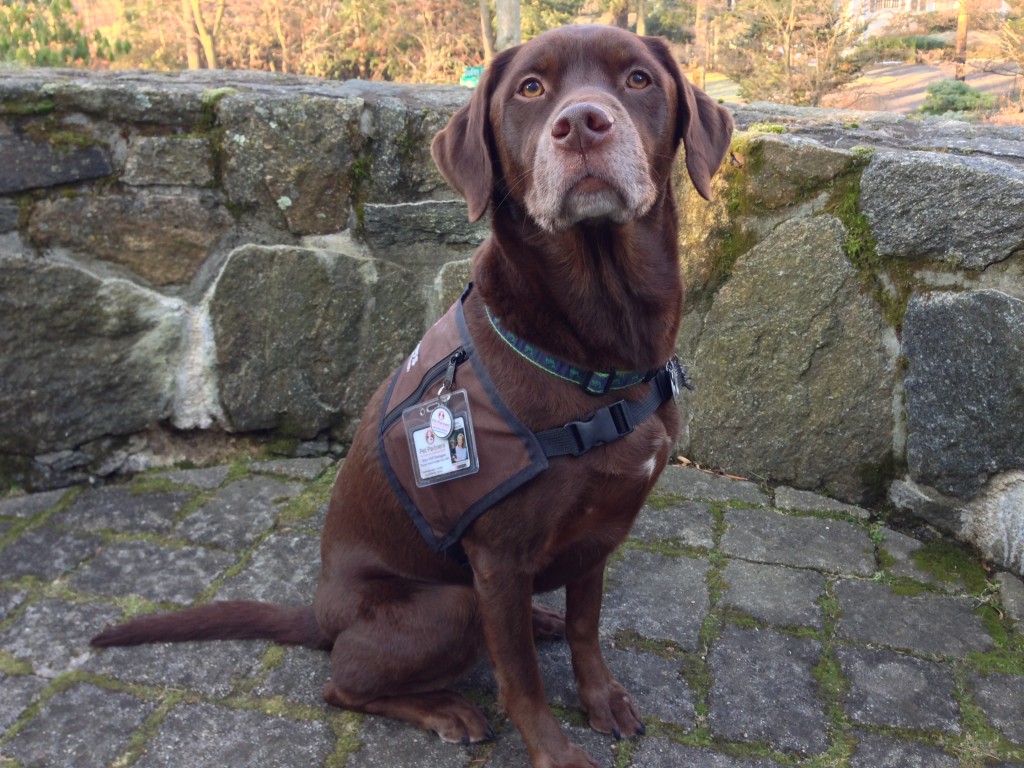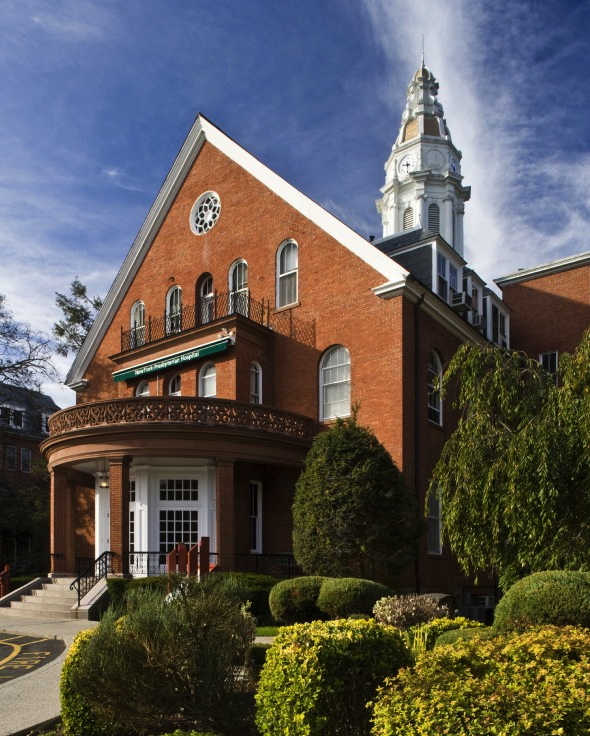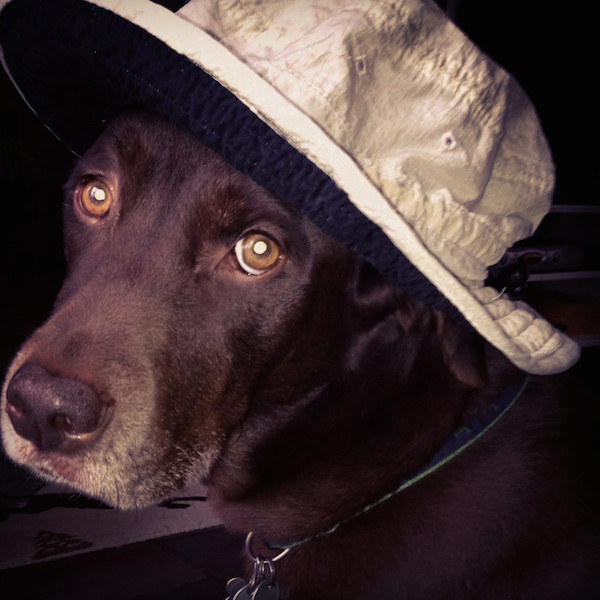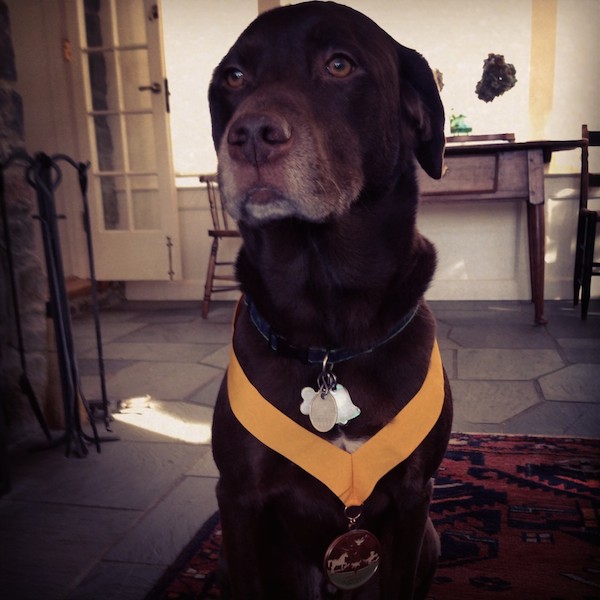During Pet Therapy, My Dog Does the Talking
- Tuesday, 05 August 2014 16:04
- Last Updated: Tuesday, 05 August 2014 16:10
- Published: Tuesday, 05 August 2014 16:04
- Melissa Hellman
- Hits: 8744
 This week's Good Work section is a guest essay from Larchmont resident Mary Dell Harrington. Ms. Harrington is a writer and co-founder of the blog Grown & Flown where this essay originally appeared. She is originally from Texas and has in past incarnations worked in television and media. In addition to her blog, you can find her writing on Huffington Post, ASPCA, Next Avenue, and 12 Most.
This week's Good Work section is a guest essay from Larchmont resident Mary Dell Harrington. Ms. Harrington is a writer and co-founder of the blog Grown & Flown where this essay originally appeared. She is originally from Texas and has in past incarnations worked in television and media. In addition to her blog, you can find her writing on Huffington Post, ASPCA, Next Avenue, and 12 Most.
My introduction to Ms. Harrington came through my volunteer work at NewYork-Presbyterian Hospital in White Plains. This campus is the hospital's dedicated psychiatric facility. One of my assignments is coordinating parts of the hospital's pet therapy program. I am continually inspired and impressed by the therapy dogs and their incredible handlers. This program brings so much joy to patients in the hospital and Ms. Harrington's essay perfectly captures the contributions and rewards of participation.
Mary Dell writes: I come from a long line of talkers, gregarious Texans who delight in telling tales and learning the backstories from strangers. My upbringing served me well while I worked in media, marketing NBC shows like the Smurfs or Saturday Night Live as story-telling opportunities. Yet now, as a pet therapy volunteer, I struggle to find words while watching my partner, a chocolate Labrador named Moose, communicate fluidly.
Five years ago, while casually thumbing through a New York-Presbyterian newsletter, a small-print headline "Volunteers with Dogs Needed" grabbed my attention. I was struck with the idea that this would be the perfect volunteer job, one that could help fill a growing gap in my life. With our eldest child a high school senior and the youngest increasingly independent, an empty nest loomed. Plus, I am a big dog lover – we have owned four Labs during our two-decade marriage. Yet the mostly likely candidate to be my partner, Moose, was still a rowdy and marginally obedient two-year old puppy, and I questioned his suitability.
 Until we walked up the steps to the hospital for our initial screening, I had never set foot on the grounds although I had driven by the entrance hundreds of time. The buildings on the 200-acre wooded campus are set far away from the road, hidden from the nearby commercial hustle-bustle. It is was only after we arrived and checked in for our evaluation that I learned that this branch of NY-P is a psychiatric hospital whose roots in this spot go back to 1894.
Until we walked up the steps to the hospital for our initial screening, I had never set foot on the grounds although I had driven by the entrance hundreds of time. The buildings on the 200-acre wooded campus are set far away from the road, hidden from the nearby commercial hustle-bustle. It is was only after we arrived and checked in for our evaluation that I learned that this branch of NY-P is a psychiatric hospital whose roots in this spot go back to 1894.
That fall night, Moose was excited and I was nervous. My treat-filled baggie did little to help me prevent him from rushing toward other prospective therapy teams, terrifying the Yorkies and Bichons. He jumped up on Stacey, the evaluator, who, with her own leap of faith, accepted us into training beginning with an obedience class followed by the pet therapy course. Within six months, Moose had become a better (far from perfect) behaved dog and I learned the skills and protocol I needed to pass the Pet Partners certification test. Our assignment was to pay a visit every Monday to the "Second Chance Program," where our patients* (all names changed below) would be adults suffering from schizophrenia.
Every Monday we ride the elevator to the third floor, ring a bell and hear the key unlocking the door on the other side.
"Moose!" We are greeted with enthusiasm from a few of the residents. "Hey, hi, how are you? Are you coming to down to Pet Therapy?" I ask, encouraging them to attend.
Joey* crouches down and calls out loudly "Moose, Moose, come here." He tugs at the leash while we hurry down the hall. Petting, hugging, tail wagging commence.
We continue our walk toward the meeting room, stopping for two men seated on a hallway couch to give Moose quick scratches behind the ears. Some of the residents are asleep and others look elsewhere, disinterested.
Pet Therapy is an "elective" and those who attend are rewarded through a therapeutic strategy of positive reinforcement. When behavior points add up to a certain level, privileges like walking around the grounds or having meals off the floor are granted. Generally half of the thirty residents arrive or drift in and out. Sometimes people join but fall asleep during the session.
Moose and I have visited this unit for five years. We have seen many patients in their very first days when their health challenges seemed almost insurmountable. Some pace silently, join us for a while and leave. I talk about the cold outside, NFL playoffs and seek out any fans who might want to talk about their teams. I bring stacks of magazines I harvest from our house, hoping a cover photo might trigger an interchange.
I tell stories about Moose and our other dogs, past and present. I hear about their dogs, those they had during childhood and others given up when their owners could no longer care for them. Maggie* shows me a tattered photo of her teacup poodle, whom she misses terribly. Moose is a substitute and Maggie sits on the floor at every session giving him extensive belly rubs.
Anna* was afraid of dogs and never wanted Moose to come near. Over the months of our visits, she gained confidence in him (and me) and began to take the soft white baby brush I offer at each session. The first time, I held his head away from her. She learned to trust him and offered him a treat with a steady hand. On the last day before she was discharged, she asked to hug Moose which she did for a very long time. He leaned into her as a knot grew in my throat.
I sometimes talk about my life and our kids. When I discuss my daughter's soccer games, I am later asked if she won or lost. When our son graduated from college, they congratulated me, for him. When I travel and miss a Monday session, I am asked how my vacation was. We know little about each other but we share details of our lives.
The group is fluid, with men and women being dismissed and others taking their places. Many have spoken to me about their frustration of waiting for a bed to open in an adult house. One was a patient named Marlene* who left and, three weeks later, returned. Formerly a Moose-enthusiast, she turned her head away as we walked in.
We celebrate the holidays with cupcakes and Christmas cards. In July, on Moose's birthday, we sing "Happy Birthday" with more cupcakes. Weekly, I offer a bit of conversation but mostly I bring them Moose who, for a speck of time, is a comfort. Now a settled seven-year old, he is obedient and patiently cuddles with anyone wanting to draw him close. He leans into their hugs, often collapsing onto his back, paws up and readily accepting the attention and petting. (For a dog, really, it may not ever be better than this.)
And for me, what do I receive? Frequently, someone will look me straight in the eye and thank me for coming. Juliet* tells me "God bless you, Mary Dell." My words fail me and I struggle to croak back, "God bless you, too." My heart breaks for these men and women who face such serious health challenges. I wish them well when they confide that they are leaving and I pray they are successful. I pray for those who remain. Each Monday, I thank the group for being so friendly to Moose and me. He conveys his happiness with ears back and tail wags. I don't have the words to express my deepest gratitude.
If you are interested in learning more about pet therapy, visit www.thegooddogfoundation.org and www.petpartners.org. If you would like to learn more about volunteering at NewYork-Presbyterian Hospital, please visit www.nyp.org/volunteer. Do you have your own inspiring volunteer experience you'd like to share? Contact us at scarsdalecomments@gmail.com.
This piece originally appeared on Grown & Flown which you can find on Facebook and Twitter.
